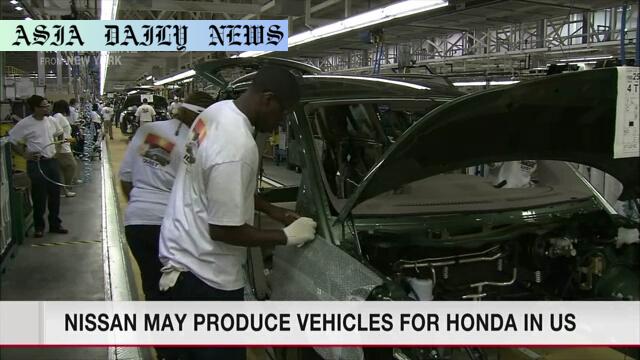Honda-Nissan Partnership: Collaboration could position both automakers for growth, efficiency, and leverage underutilized US manufacturing.
- Key Point 1: Honda may sell Nissan-made vehicles in the US, including pickup trucks under the Honda brand.
- Key Point 2: This collaboration could help Honda expand its customer base and address Nissan’s production inefficiencies.
- Key Point 3: Rising US auto import tariffs may have pressured Nissan to optimize American operations.

Introduction to the Honda-Nissan Alliance Proposal
In an unexpected yet potentially impactful move, Japanese automakers Honda and Nissan are reportedly in discussions to create a collaborative strategy in the United States. This partnership, centered around utilizing underused resources, is not only significant in its potential benefits for both brands but could also reshape the automotive competition in the US market. If implemented, this collaboration will allow Honda to market Nissan-produced vehicles, primarily pickup trucks, under its own brand in the United States. This announcement comes at a particularly pivotal moment, as both companies look to navigate their unique financial and operational challenges. For Nissan, excessive underutilization of its US manufacturing plants and sluggish sales have been critical concerns. Conversely, Honda’s interest lies in expanding its market share and leveraging US-made products to avoid punitive tariffs.
Strategic Benefits: A Win-Win Collaboration
This initiative provides a range of benefits for both automakers. For Honda, the ability to incorporate pickup trucks efficiently into its product repertoire allows it to enhance its customer offerings and reach a broader market base. Pickup trucks, a consistently popular vehicle type in the US, have remained a weak spot in Honda’s lineup historically. By selling rebranded Nissan vehicles, Honda delivers what its customers demand without investing heavily in creating its own manufacturing setup for this vehicle segment.
Nissan, on the other hand, gains the opportunity to optimize its US plants. The automaker faced underutilization issues at several North America-based facilities amid stagnating sales. Heather Anderson, an automotive expert, noted that this move helps Nissan avoid the costly repercussions of maintaining idle manufacturing setups while reinforcing trust among its labor force and dealers. Furthermore, the revenues generated from these sales ensure operational stability.
Addressing Market Pressures and Tariff Constraints
Recent economic measures, including additional import tariffs on automobiles and parts, have placed automakers under significant pressure to localize manufacturing. This policy push has spurred the Honda-Nissan conversation as a practical solution considering their shared reliance on the North American market. For Honda, it offers a timely solution to mitigate financial risks. Creating vehicles domestically rather than risking fluctuating tariff penalties improves cost-efficiency and ensures flexibility in pricing, making Hondas more competitive on US soil.
Meanwhile, for Nissan, the opportunity aligns perfectly with the automaker’s immediate need to bolster its financial portfolio. Despite some growth leeway, Nissan has struggled to amplify sales footprints within the American market compared to dominant rivals like Toyota or Ford. Enabling Honda access stabilizes underemployed operations but doubles turnover visibility.
The Bigger Picture: Long-Term Collaborations in the Auto Industry
Despite initial enthusiasm toward the handshake, skeptics question coordination sustainability, citing earlier Honda-Nissan partnerships or even aborted negotiations joint-messages partnerships unraveled adjustment philosophies differing operating DNA patterns ecosystems



Commentary
The Strategic Implications of the Honda-Nissan Alliance
This collaboration between Honda and Nissan signifies a monumental shift in the automotive industry landscape. For a market as competitive as the United States, partnerships like these offer businesses an avenue to not only reduce inefficiencies but also hedge against mounting market risks. By leveraging each other’s strengths—Honda’s strong brand presence and Nissan’s underused manufacturing facilities—both companies demonstrate a pragmatic approach to tackling their individual challenges.
Acknowledging Economic and Operational Pragmatism;